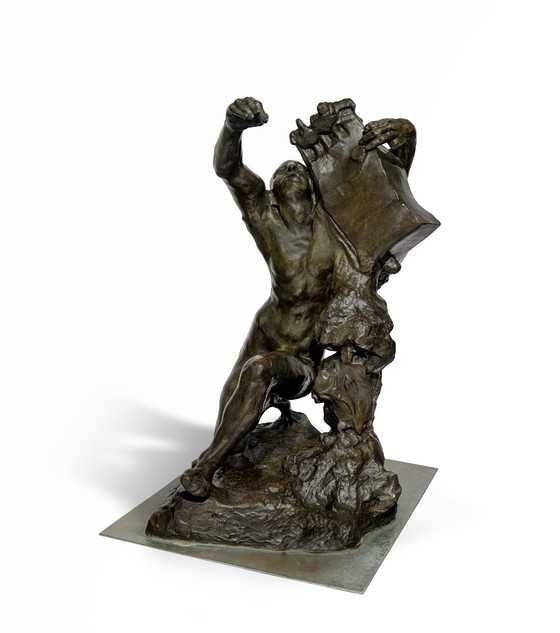Orpheus, first modeled probably 1890, this cast 1969
Bronze
Auguste Rodin
French, 1840-1917
Orpheus was a Greek poet and musician whose tragic story is recounted in Ovid’s Metamorphoses, an ancient text Rodin often turned to for inspiration. According to legend, Orpheus was distraught over the untimely death of his wife, Eurydice, and descended to the underworld to plead for her release. He played his lyre for Hades and the music melted the hearts of the gods and denizens of the underworld.
Rodin depicts the moment Orpheus has won his wife’s freedom. He falls to his knees, throws back his head, and raises his arms in relief. He doesn’t yet know that he will lose her again after breaking a promise to Hades and the guardians of the underworld to not look back at her as they ascend to the world above.
Gift of B. Gerald Cantor Art Foundation, M.73.108.3
Visual Description: This is a bronze sculpture that shows a nude man in a half-kneeling pose. Orpheus, a Greek poet and musician, stands almost five feet tall and has a dark green patina. Orpheus is mid-collapse, his legs splayed out underneath him stopping him from falling to the ground. His right arm is raised above his head in supplication and his left grasps his lyre, a stringed musical instrument. Orpheus’ head is thrown back, eyes closed and mouth open in relief.




